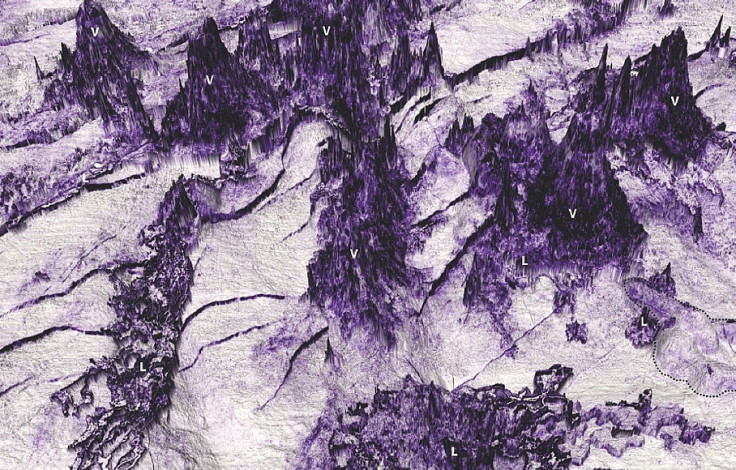35 million-year-old underwater 'Mordor' that is home to 26 volcanoes found buried in the sea
The "Tolkienesque" underwater landscape contains some volcanoes that were measured to be around 2,000 feet high.

Could the evil fictional empire of Mordor from the infamous Lord of the Rings books actually be real? A team of scientists from the University of Adelaide, University of Aberdeen and Commonwealth Scientific and Industrial Research Organisation (CSIRO), announced the discovery of a "Tolkienesque" landscape buried deep under the sea in Australia.
The underwater landscape, which the researchers dubbed "Mordor under the sea" consists of 26 different submarine volcanoes that were created around 35 million years ago. The map of the ancient underwater volcanic realm looks eerily similar to Mordor and was found 3D seismic reflection data – a kind of geo-mapping technique that use seismic waves to measure structures under the Earth's surface, LiveScience reported.
"By using data acquired as part of oil exploration efforts, we have been able to map these ancient lava flows in unprecedented detail, revealing a spectacular volcanic landscape that bring to mind illustrations from Lord of the Rings," Dr Nick Schofield from the University of Aberdeen's School of Geosciences, who co-authored the study, said in a statement.
The newly discovered underwater volcanoes were found buried around 820 feet beneath the sediment on the sea floor. Some of the volcanoes measured up around 2,000 feet (625 metres) high. The researchers also found ancient lava flows measure 34 km long and 15km wide.
"Submarine lava flows are inherently more difficult to study than their counterparts on the Earth's surface due to their inaccessibility, and the technology we have used is similar in many ways to what is used to produce ultrasound images of babies, but for the Earth," Schofield said. "By using this technique, we have a unique insight into a landscape that has remained hidden for millions of years, highlighting the growing importance of seismic data in studying submarine volcanism."
The data from the new study has been published in the American Geophysical Union Journal and is now being used by scientists to better understand how underwater volcanoes evolve.






















